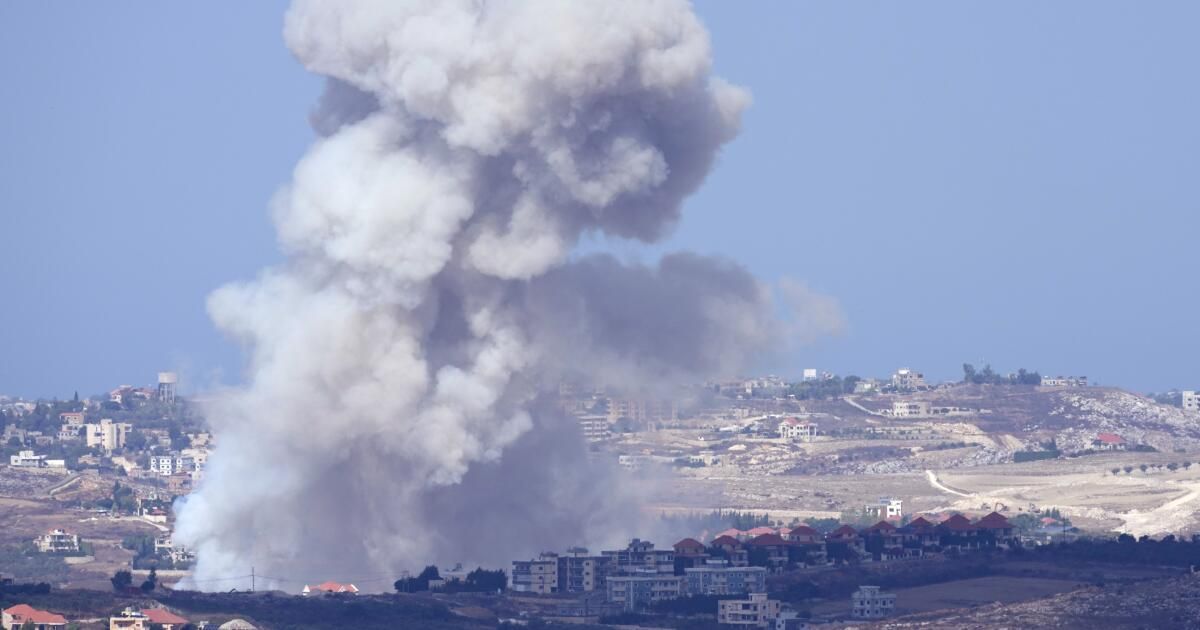Israel remotely detonated thousands of Hezbollah missiles Pagers and walkie-talkies has triggered a series of escalations that have led to the deadliest day of Israeli airstrikes on Lebanon in nearly two decades.
But while many Western politicians, analysts and media outlets were obsessed with the novelty of an attack that seemed straight out of the pages of a spy novel, expressing amazement The success of Israeli intelligence in placing the explosive devices among militia members caused them to largely ignore the sheer terror experienced by thousands of Lebanese civilians during the explosions that rocked crowded neighborhoods for two days last week. Lebanon is a country that has suffered decades of war and trauma, including a ongoing economic collapse and the Beirut port explosion in 2020.
The booby-trapped pagers and handheld radios, which had apparently been… Equipped with explosives Before being sent to Lebanon, he was assassinated in At least 37 people and more than 3,000 wounded. The explosions were followed by a dramatic escalation on Thursday, when Israeli forces carried out their most violent offensive yet. intense air attacks in southern Lebanon in almost a year. The next day, an Israeli airstrike destroyed two buildings in southern Beirut, killing at least 45 —including three children—and wounded dozens more. The attack killed two senior Hezbollah commanders and 12 other members of the militia who were apparently gathered beneath one of the buildings.
On Saturday, Hezbollah responded by firing dozens of rockets toward northern Israel, and Israel carried out Nearly 300 airstrikes in southern Lebanon, allegedly targeting Hezbollah rocket launchers. The group fired More than 100 rockets hit Israel early Sunday morningpushing deeper into Israeli territory than it did in October. And on Monday, Israel once again stepped up its airstrikes that have killed more than 350 people and wounded more than 1,200, according to Lebanese officials, the highest number of casualties inflicted by Israeli forces there since 2006.
Each attack and counterattack increases the risk that Israel's war on Gaza will spiral into a broader conflict involving Lebanon and other Middle Eastern countries. A full-scale war between Israel and Hezbollah would dwarf the conflict they had in the summer of 2006 and could precipitate regional hostilities pitting Israel and the United States on one side against Iran and its network of allied militias in Lebanon, Iraq, Syria and Yemen on the other.
Since Hamas militants attacked Israel on Oct. 7, President Biden and his top aides have insisted that their goal is to prevent Israel’s subsequent invasion of Gaza from escalating into such a regional conflagration. Hezbollah began firing rockets and drones into northern Israel on Oct. 8 in what the group’s leaders described as an act of solidarity with Palestinians aimed at diverting Israeli resources from Gaza.
But Biden has repeatedly failed to pursue the most likely path to prevent a regional war: pushing for an immediate ceasefire in Gaza, particularly using U.S. influence to withhold billions of dollars in Arms shipments to Israel. All of Iran's allies, especially Hezbollahhave indicated that they will stop their attacks on Israel once the fighting in Gaza ends.
For the past 11 months, Israeli and Hezbollah forces have exchanged fire almost daily on the Israel-Lebanon border, but until last week’s Israeli strikes, Hezbollah had avoided the kind of large-scale response that would precipitate an all-out war. Meanwhile, Israeli airstrikes, artillery shelling and targeted retaliatory killings have killed hundreds of the group’s fighters. More than 100,000 civilians have been forced from their homes on both sides of the border.
Israel's explosive pagers and handheld radios escalated the conflict with a particularly insidious and reckless attack that likely constituted a war crimeAs Human Rights Watch and other groups have noted, international humanitarian law Prohibits the use booby-trapped, especially with objects that are commonly used by civilians.
The attack detonated thousands of bombs across a country roughly the size of Connecticut — in supermarkets, hospitals, street cafes, hair salons and funerals. Children, medical workers and innocent bystanders were killed and maimed. A statement Following the first wave of explosions, Hezbollah said it had given pagers “to employees of various units and institutions,” implying that the devices had been distributed not only to its fighters but also to civilian workers. The group is not only Lebanon’s most dominant military force but also its most powerful political party, and runs an extensive network of social services including schools, hospitals, supermarkets and credit unions.
Over those two days, I made a round of phone calls to check on family and friends in Beirut, southern Lebanon, and Dahiyeh, a densely populated, Shia-dominated suburb of Beirut. During many of these calls, I could hear ambulance sirens wailing in the background. Hospitals were overwhelmed by the influx of thousands of trauma victims, many with life-changing injuries to their eyes and limbs. An ophthalmologist He told the BBC that in 25 years of practice, he had “never removed as many eyes” as he was forced to do in one day last week.
Those who were not injured were left in shock and with overwhelming paranoia about the most basic aspects of daily life. One of my cousins who lives in Dahiyeh had disconnected the solar-powered lithium batteries that provided electricity to his apartment for fear they might detonate. He and his family sat in the dark. “What can we do?” my cousin asked. “We don’t know what to believe anymore.”
The path to de-escalation and calm in the region must begin with a ceasefire in Gaza. As long as the Biden administration refuses to acknowledge and act on that reality, Lebanon and the Middle East will remain mired in bloodshed, fear and chaos.
Mohamad Bazzi is the director of the Hagop Kevorkian Center for Near Eastern Studies and a professor of journalism at New York University.











